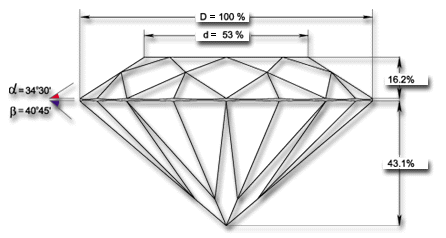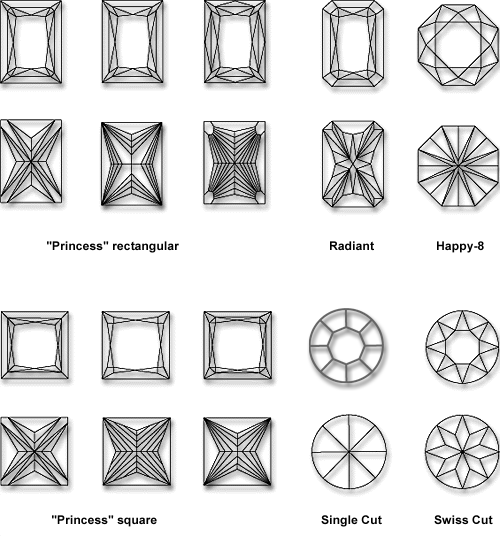| CUT SHAPES AND ELEMENTS OF DIAMOND CUT | |
|
|
|
| A gem-quality diamond is not
mounted in the state it has been quarried. At first it is cut. For many
centuries, the style of diamond cutting has been gradually changed along
with understanding optical properties and development of lapidary arts.
In 1919, Marcel Tolkowsky calculated the angles and proportions of an
ideal diamond, which would be characterized by the maximum luster and
fire. A round diamond with 57 facets (the commonest style) was taken
as an original shape.
|
|
|
The main parameters of a cut diamond
are :
The facets of a diamond having a similar shape and a similar tilt to the girdle plane form a stage. |
|
|
In addition to the standard full cut (57 facets), there are other cutting styles in the market, which are commonly called fancy styles. These and some other styles have their own names; the rest require the term "fancy" added to their description (for example, round fancy cut). The cutting elements of such diamonds may be described with additional terms; for example, some elongated shapes have a keel instead of a culet . Fancy shapes include wedge-cut (oval, pear, marquise, heart, princess, radiant), step-cut (emerald, baguette, square), and combined varieties. Simplified varieties of the round brilliant cut are represented by Single Cut (with eight facets on the pavilion and eight facets on the crown) and Swiss cut (with sixteen facets on both crown and pavilion). These styles are usually applied to small stones.
|
|
|
|

